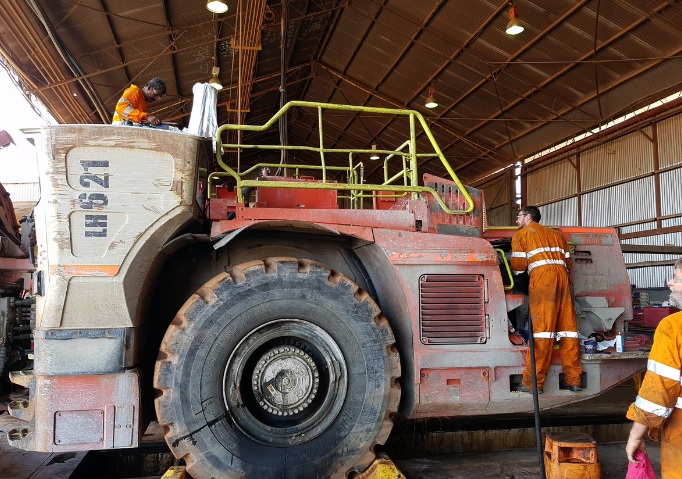Mining operations, inherently risky, necessitate an unwavering commitment to safety for the protection of workers. Amid various safety measures, one often underestimated element is the use of handrails. These seemingly simple structures, highlighted by Bendtech Group’s insights on using handrails for accident prevention in mines, significantly contribute to accident prevention by offering essential stability and support. Emphasizing customization, quality, maintenance, and technological integration, this exploration delves into the profound significance of handrails in enhancing mine safety. Recognizing handrails as integral components in navigating the complexities of mining environments underscores their pivotal role in mitigating risks and ensuring the well-being of workers.
The Unseen Guardians: Understanding Handrail Significance
Handrails transcend mere fixtures, constituting integral components within a comprehensive safety strategy. In the dynamic and challenging terrains of mines, where workers navigate tunnels, climb ladders, and negotiate platforms at varying heights, handrails emerge as indispensable aids. These structures provide essential stability, acting as crucial safeguards to prevent slips, trips, and falls, thereby significantly contributing to accident prevention. In recognizing the multifaceted nature of mine environments, handrails play a pivotal role in ensuring the safety and well-being of workers by offering reliable support in precarious situations. Their significance lies not only in their physical presence but in their proactive contribution to creating a secure working environment within the mining industry.
Tailoring Safety: The Importance of Customization
In the realm of mine safety, customization stands out as a pivotal factor. Recognizing that each mine possesses a distinctive layout and set of challenges, the demand for tailored solutions becomes paramount for ensuring optimal safety. Handrails, when meticulously designed and strategically placed with the specific mine environment in mind, transform into powerful tools for mitigating risks effectively. A comprehensive assessment of the mine layout becomes imperative, guiding the identification of high-risk areas where the strategic placement of handrails can yield the most significant impact. This emphasis on customization underscores the proactive and targeted approach required to enhance safety measures within the diverse landscapes of mining operations.
Durability Matters: Quality Handrails for Long-term Safety
Thriving in the challenging environment of underground mining, handrails transcend mere safety standards by withstanding harsh conditions. The emphasis on incorporating corrosion-resistant materials into their construction is pivotal, ensuring not only the longevity of handrails but also their sustained effectiveness in safeguarding workers. Paramount to their role is durability, a characteristic that aligns with a steadfast commitment to providing solutions that stand resilient against the demanding conditions inherent in the mining industry. In recognizing the unforgiving nature of underground mining, the use of corrosion-resistant materials in handrails becomes a cornerstone, reflecting a dedication to creating enduring safety measures that endure the test of time and environmental stressors.
Proactive Safety: Handrail Maintenance and Inspections
Post-installation, handrails demand a proactive approach to maintenance. Regular inspections and maintenance routines are not only crucial but also indispensable in ensuring the continued structural soundness and effectiveness of handrails. Implementing a systematic maintenance schedule plays a pivotal role in identifying and addressing potential issues before they escalate into serious problems. This proactive stance not only enhances overall safety by preemptively addressing potential risks but also minimizes downtime by averting unexpected failures. Recognizing the dynamic nature of mining environments, a commitment to ongoing maintenance emerges as a proactive strategy, reinforcing the reliability and functionality of handrails for the long-term well-being of workers.
Emergency Preparedness: Handrails as Integral Components
Handrails play a dual role, not limited to accident prevention but extending to a vital contribution in emergency evacuation plans within mining operations. In times of crises, be it a fire or collapse, handrails serve as secure aids, enabling workers to swiftly and safely navigate toward designated exit points. The alignment of handrail installations with emergency evacuation protocols underscores a holistic approach essential for comprehensive mine safety. Recognizing handrails as integral components in both routine safety and emergency scenarios emphasizes their versatility and critical role in ensuring the well-being of workers across various operational conditions.
Innovation for Safety: Integrating Technology into Handrail Systems
Remaining at the forefront of technological advancements proves crucial in the ever-evolving landscape of mining operations. The integration of innovative technologies, exemplified by sensor-equipped handrails and real-time monitoring systems, contributes significantly to enhancing safety measures in mines. These cutting-edge technologies go beyond providing an additional layer of protection; they empower data-driven decision-making, facilitating continuous improvement in safety protocols. By embracing and integrating such advancements, mining operations can proactively identify potential risks, respond promptly to evolving situations, and continuously refine safety strategies.
Final Thoughts
The effective use of handrails in mines is a multifaceted strategy involving customization, quality assurance, proactive maintenance, and the integration of cutting-edge technologies. Handrails emerge as unsung heroes in the mission to create safer mining environments. As mining operations evolve, so must safety measures, and handrails, when utilized effectively, prove to be indispensable in the ongoing effort to reduce accidents and prioritize the well-being of workers.





